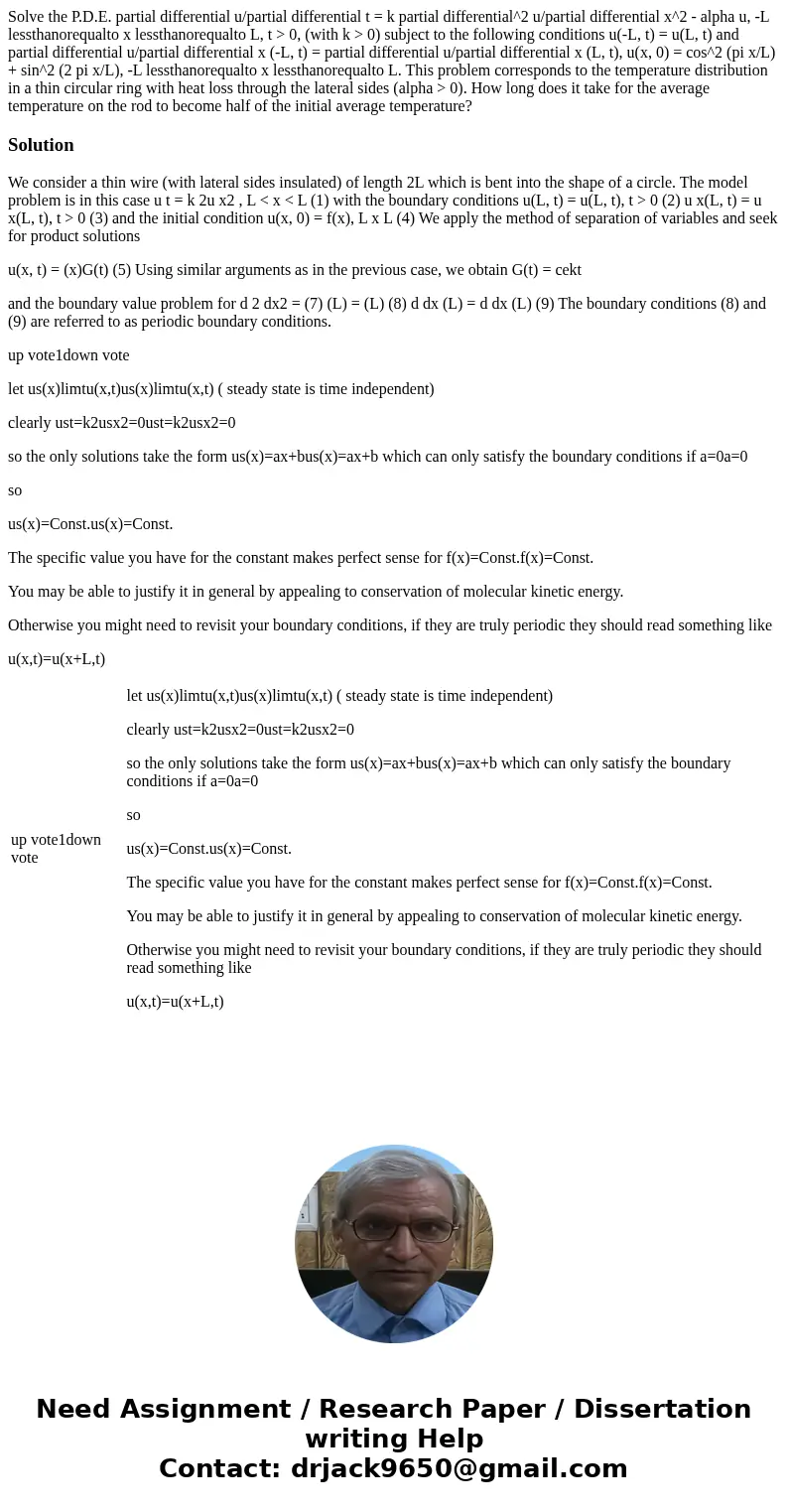Solve the PDE partial differential upartial differential t
Solution
We consider a thin wire (with lateral sides insulated) of length 2L which is bent into the shape of a circle. The model problem is in this case u t = k 2u x2 , L < x < L (1) with the boundary conditions u(L, t) = u(L, t), t > 0 (2) u x(L, t) = u x(L, t), t > 0 (3) and the initial condition u(x, 0) = f(x), L x L (4) We apply the method of separation of variables and seek for product solutions
u(x, t) = (x)G(t) (5) Using similar arguments as in the previous case, we obtain G(t) = cekt
and the boundary value problem for d 2 dx2 = (7) (L) = (L) (8) d dx (L) = d dx (L) (9) The boundary conditions (8) and (9) are referred to as periodic boundary conditions.
up vote1down vote
let us(x)limtu(x,t)us(x)limtu(x,t) ( steady state is time independent)
clearly ust=k2usx2=0ust=k2usx2=0
so the only solutions take the form us(x)=ax+bus(x)=ax+b which can only satisfy the boundary conditions if a=0a=0
so
us(x)=Const.us(x)=Const.
The specific value you have for the constant makes perfect sense for f(x)=Const.f(x)=Const.
You may be able to justify it in general by appealing to conservation of molecular kinetic energy.
Otherwise you might need to revisit your boundary conditions, if they are truly periodic they should read something like
u(x,t)=u(x+L,t)
| up vote1down vote | let us(x)limtu(x,t)us(x)limtu(x,t) ( steady state is time independent) clearly ust=k2usx2=0ust=k2usx2=0 so the only solutions take the form us(x)=ax+bus(x)=ax+b which can only satisfy the boundary conditions if a=0a=0 so us(x)=Const.us(x)=Const. The specific value you have for the constant makes perfect sense for f(x)=Const.f(x)=Const. You may be able to justify it in general by appealing to conservation of molecular kinetic energy. Otherwise you might need to revisit your boundary conditions, if they are truly periodic they should read something like u(x,t)=u(x+L,t) |

 Homework Sourse
Homework Sourse